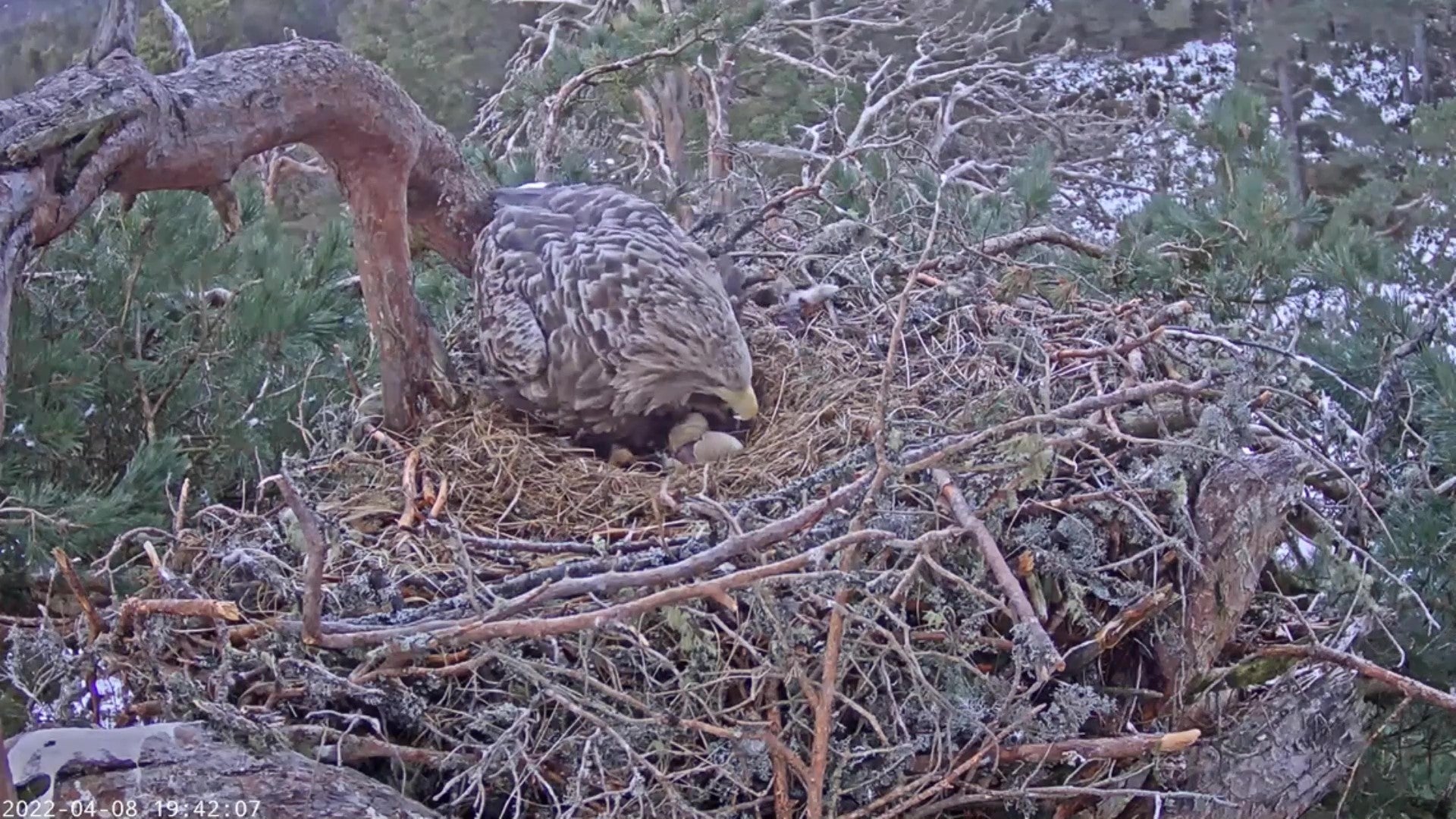UK first as hidden camera captures wild white-tailed eagle egg hatching
The camera is hidden in a stick three metres away from the nest to avoid disturbing the birds.

Your support helps us to tell the story
From reproductive rights to climate change to Big Tech, The Independent is on the ground when the story is developing. Whether it's investigating the financials of Elon Musk's pro-Trump PAC or producing our latest documentary, 'The A Word', which shines a light on the American women fighting for reproductive rights, we know how important it is to parse out the facts from the messaging.
At such a critical moment in US history, we need reporters on the ground. Your donation allows us to keep sending journalists to speak to both sides of the story.
The Independent is trusted by Americans across the entire political spectrum. And unlike many other quality news outlets, we choose not to lock Americans out of our reporting and analysis with paywalls. We believe quality journalism should be available to everyone, paid for by those who can afford it.
Your support makes all the difference.A hidden camera has captured the first live UK footage of a wild white-tailed eagle hatching.
Staff at RSPB Scotland’s Abernethy nature reserve in Perthshire, where the eaglet hatched, described it as being “such a special moment”.
It comes after eggs were first spotted in a nest being used by eagles Shona and Finn early in March.
The nest’s location remains secret, to avoid the birds being disturbed, but after both eagles took turns incubating the eggs and protecting them from the snow and recent storms, RSPB Scotland confirmed the first egg had hatched at 1943 on April 8.
A camera, which has been hidden in a stick three metres away from the nest to avoid disturbing the birds, captured the moment – with images of the eaglet emerging being beamed live to the Loch Garten Nature Centre in Abernethy.
Now to see that they’ve hatched their first chick is incredible. We feel so privileged to have been able to witness such a special moment.
Fergus Cumberland, visitor experience manager for RSPB Scotland, said: “The response to the eagles from the public has been one of excitement and anticipation.
“The true character and personalities of these birds are on full display for the public to experience and it is a wonder to watch it all unfold.
“Now to see that they’ve hatched their first chick is incredible. We feel so privileged to have been able to witness such a special moment.”
Also known as sea eagles, white-tailed eagles are the UK’s largest bird of prey with a wingspan of 2.5 metres.
The birds became extinct in Scotland in 1918, but eagles from Scandinavia were reintroduced to the Isle of Rum in 1975.
Subsequent reintroductions in other parts of the country, as well as the birds naturally moving around the country, means there are now populations spread as far as Fife, Orkney and the north-west Highlands.
After hatching, white-tailed eagle chicks generally remain in the nest, being fed by their parents for approximately 12 weeks.
And after leaving the nest they remain close by and are dependent on their parents throughout the autumn, before seeking their own territory.
Jess Tomes, of RSPB Scotland, said: “The next two weeks are critical for this young eagle as they are unable to regulate their own body temperature for the first few days and are totally dependent on their parents to shelter them from the worst of a Cairngorms spring.
“It’ll be a very tense time for all watching but we welcome everybody to visit us at the Nature Centre and experience these incredible moments.”